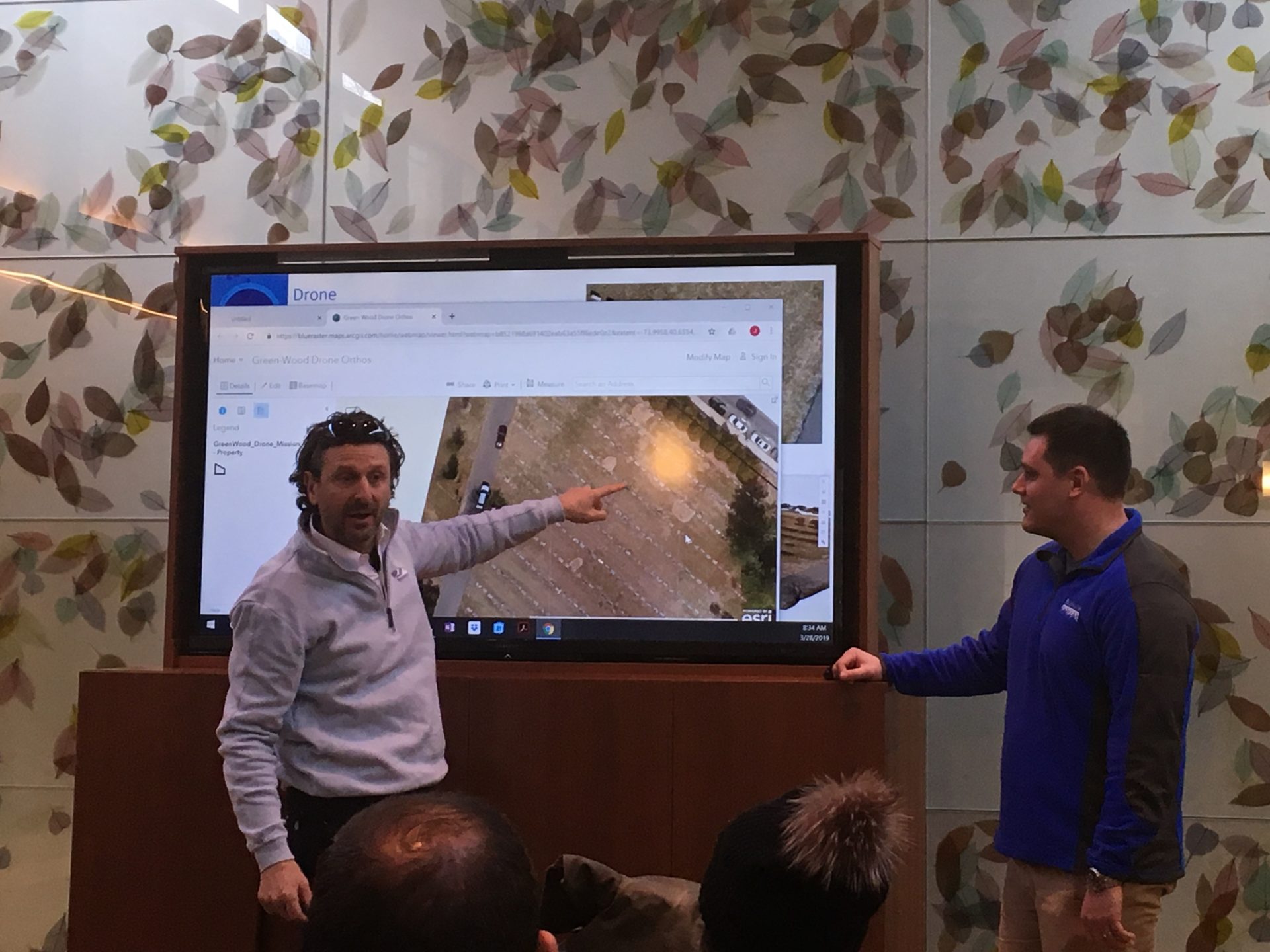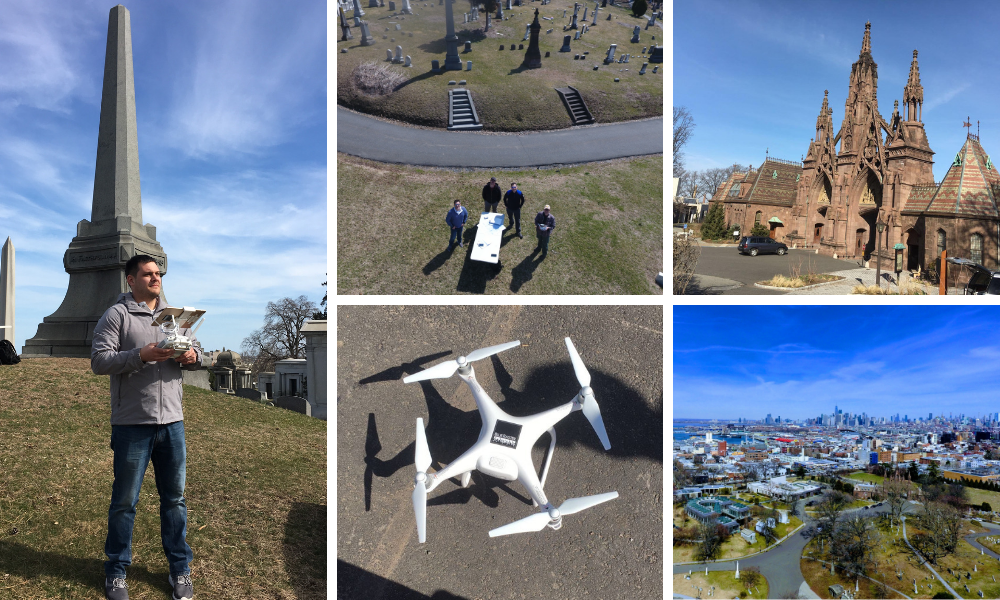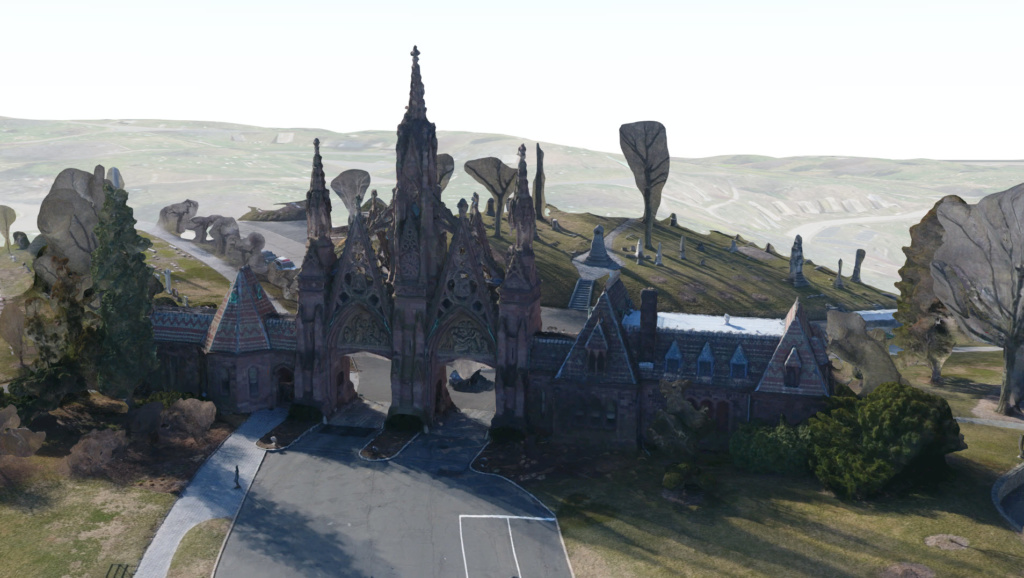Last month, Blue Raster’s drone capabilities took flight. In a new initiative with Green-Wood Cemetery, Cornell University, and a group of turfgrass experts from across the United States, Blue Raster is using drones to help advance the science for confronting climate change in an urban landscape.
The issue at hand is the rapid spread of warm-season invasive grass species that impacts the aesthetics of the cemetery. This results in adaptive preventative maintenance practices and high costs to keep the cemetery looking beautiful. The group is studying alternatives and strategies that put Green-Wood on the cutting edge of urban climate change mitigation. This research is also applicable to any urban parks, public gardens, cemeteries and golf courses.

“Turf Guy” Dr. Frank Rossi of the School of Integrative Plant Science at Cornell University and Christopher Gabris from Blue Raster looking at high resolution drone imagery captured the day before
To study the spread of invasive grass throughout the year, Blue Raster flew a series of drone missions over the sprawling 478 acre cemetery. When additional missions fly for comparison, the data capture will provide high quality imagery that will identify invasive grass for measurement and monitoring throughout the year. Visit our Facebook album for more of the amazing aerial pictures.

Using Esri’s Drone2Map and ArcGIS Online Web Scenes, Blue Raster was also able to deliver some 3D products, including the iconic gateway entrance and some large mausoleums.

Stay tuned for updates on the project, the analysis, and the results of this very exciting turfgrass study!
